
Disciplined Agile’s definition of a value stream references Wikipedia’s definition: “a value stream is the set of actions that takes place to add value to a customer from the initial request through the realization of value by the customer.”
Organizations can have many product or service value streams. For example, I am writing this article using Microsoft Word. That is a product within a product line (Office 365) that Microsoft sold to me. It is one of their value streams. Windows 10 is another value steam, as is Azure and many others.
Disciplined Agile’s value stream management approach centers on a visual representation of an Idealized Value Stream (“IVS”) that begins and ends with a customer. The current DA IVS is focused only on the Development Value Stream with supporting context that we must attend to both the Operational and Supporting value streams.
This article will use a visual that brings all three (Operational, Development, & Supporting) into view. This approach clearly shows how value may flow to a customer vs. the discrete focus on the development value stream. We may see something in DA that looks similar in the future, but I want to clarify that this is a visualization that I created that builds on and evolves the one in DA to limit any confusion.
Figure 1 is where we start, with the customer, who may be internal or external to the organization. Whether a request directly from a customer or a customer needs to be identified from a Stakeholder, this is where we start.

Figure 1: We always start with the customer
There are two significant parts of the IVS, the Business side (discovery) and the Implementation side (delivery). The request or need must align with the organization’s mission and desired outcomes. In the IVS, we flow through that highest level – strategies. Figure 2 shows this as Strategic Objectives, which can take one to many years to achieve.
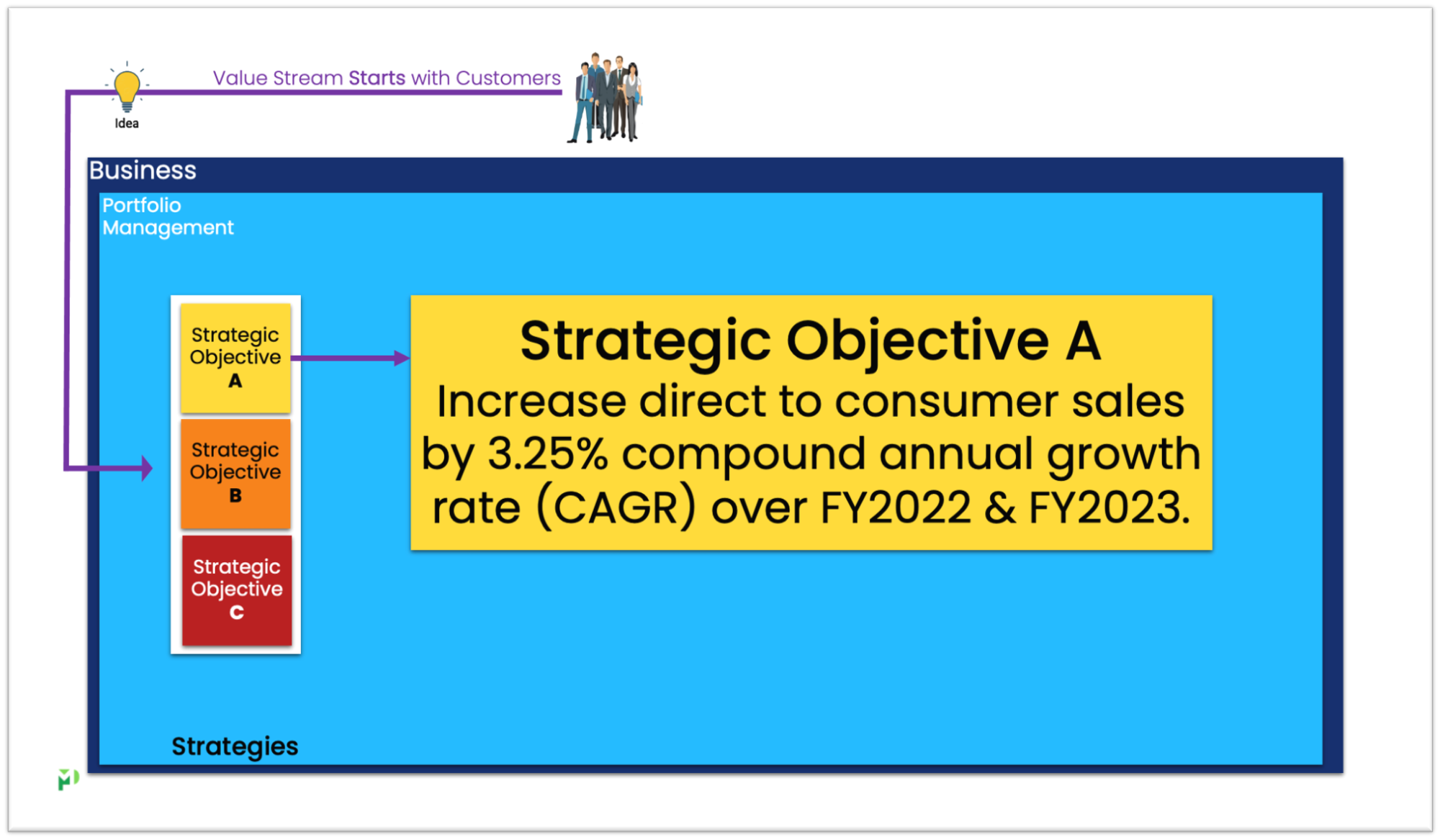
Figure 2: Strategies
An organization may have many strategic objectives. In this example, three are shown (A, B, & C), but there could be five, seven, or, say, ten in total. In addition, other value streams would be contributing to their desired outcomes.
Strategies may need one or more product or service value streams to achieve. They are decomposed into a small quantity of work; in the IVS, these are Initiatives. Figure 3 shows this decomposition. Strategic Objective A is broken down into multiple initiatives.
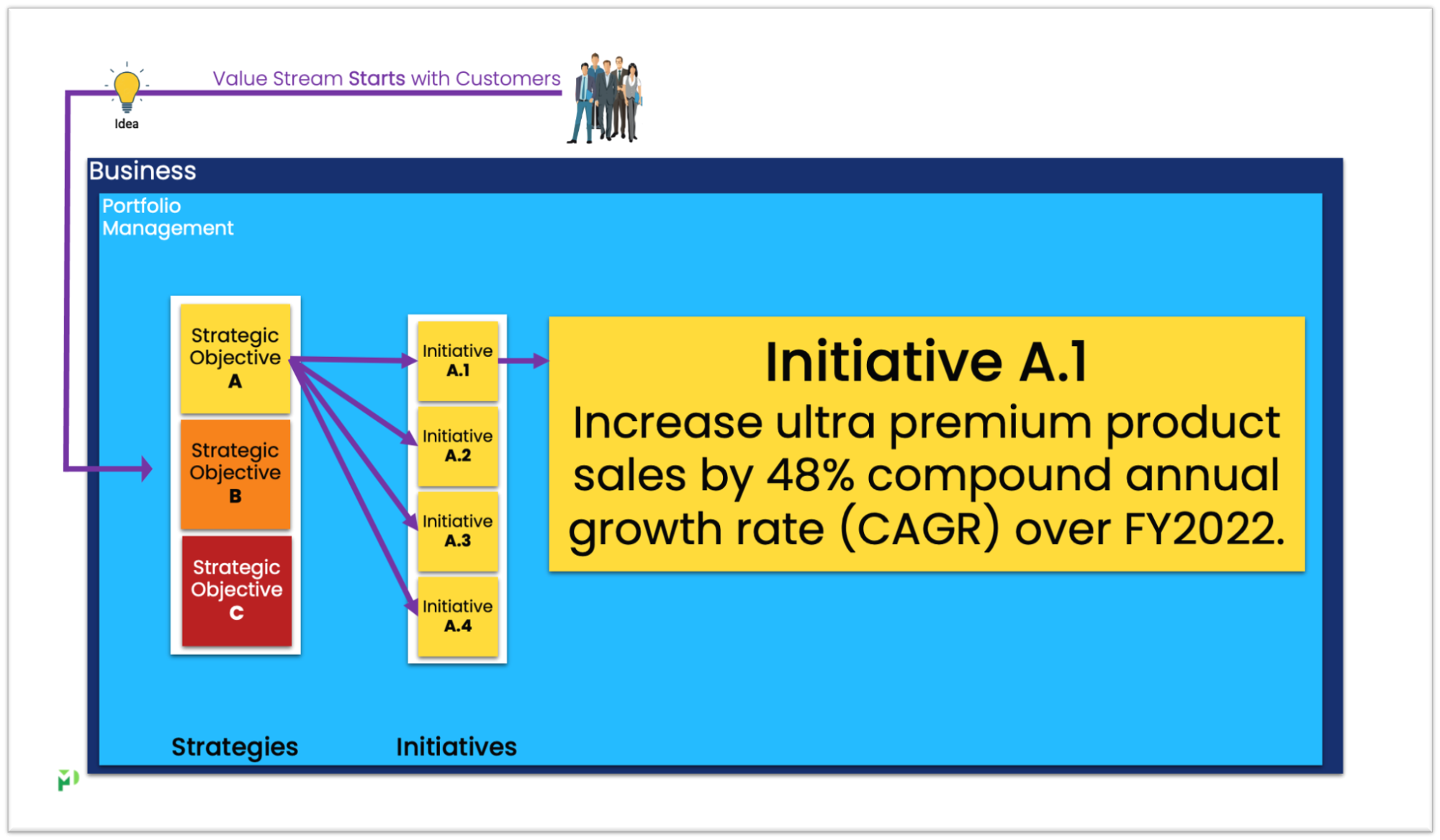
Figure 3: Initiatives
Initiatives are still a significant quantity of effort, similar to an Epic in SAFe. Therefore, the example initiative in figure 3 will be further broken down into many work efforts, each contributing to delivering value to a customer that aggregated together supports the desired outcome of the initiative.
Initiatives are further decomposed to the next and lowest level on our IVS Business side, forming the Business Backlog. This backlog would contain both Minimum Business Outcomes (MBIs) and Minimum Viable Product (MVPs). Figure 4 is an example of an initiative broken down into MBIs, each helping achieve the initiative.
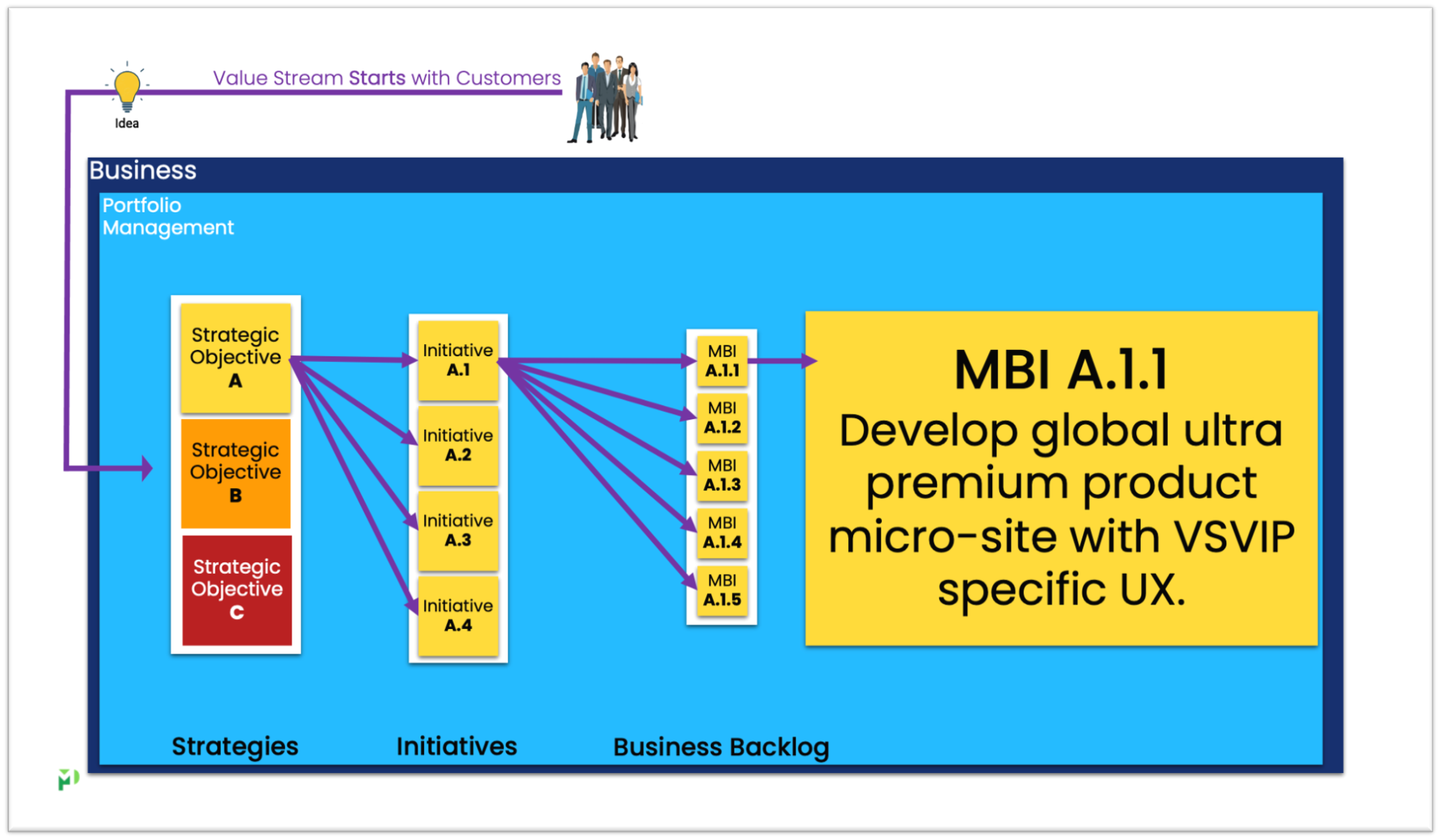
Figure 4: Business Backlog
The Portfolio Management portion of the Business Side (figure 5) depicts Strategies broken down into Initiatives, broken down into MBIs on the Business Backlog. While Strategies rarely change and Initiatives infrequently change, there should be changes in the Business Backlog. As MBIs reach their Definition of Done, we measure their outcomes and gain valuable feedback from the market via our customers. The MBI outcomes provide information that helps us make more informed decisions on what value is to the customer and what we should do next.
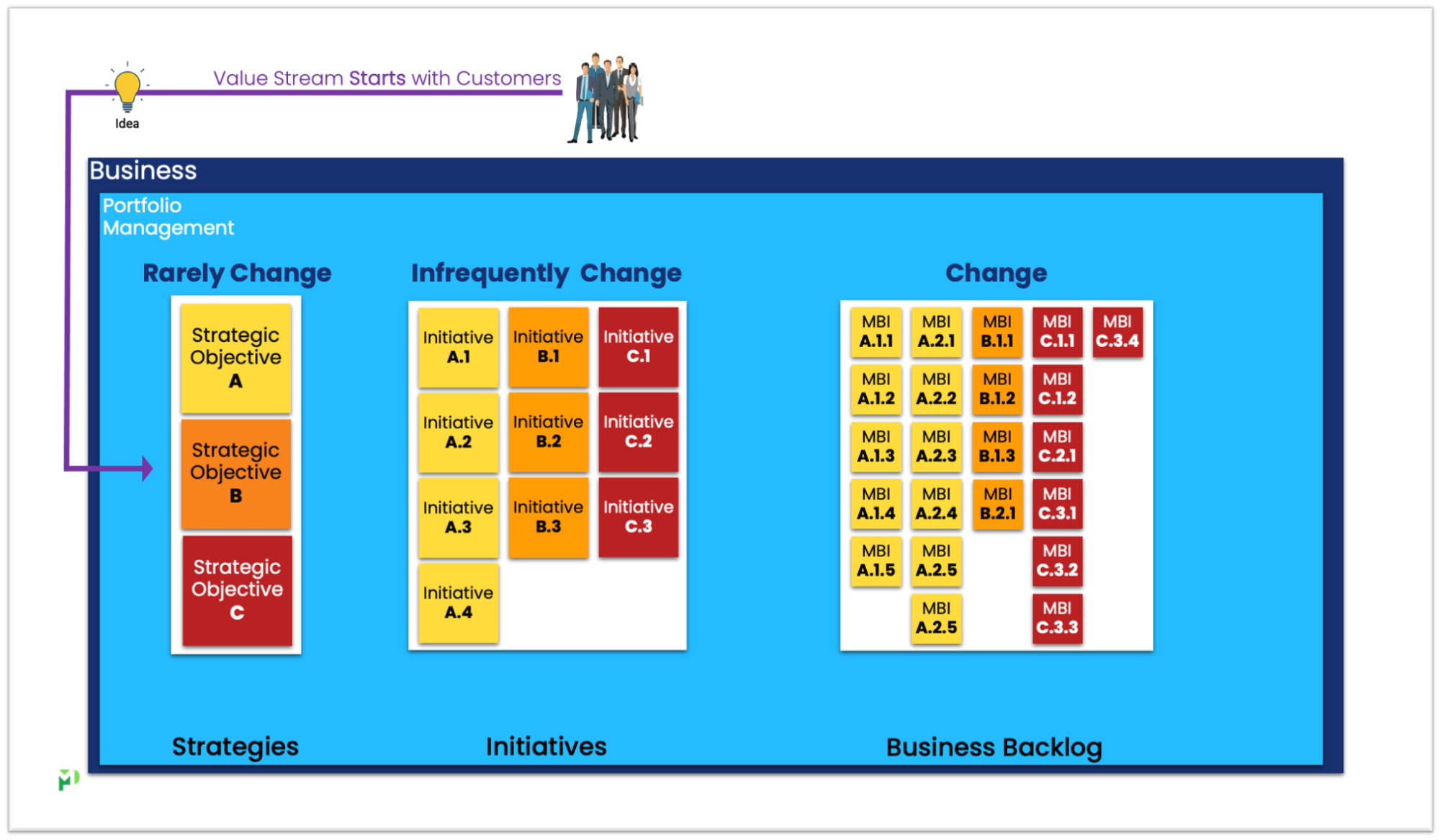
Figure 5: IVS Business Side Portfolio Management
Within the Business side of the IVS, the place where the Business Backlog items are refined via collaborative discussion and written context in the MBI or MVP is the Discovery Workflow. As the MBIs and MVPs meet their Definition of Ready, they reside in the “Intake Queue” shown in figure 6.
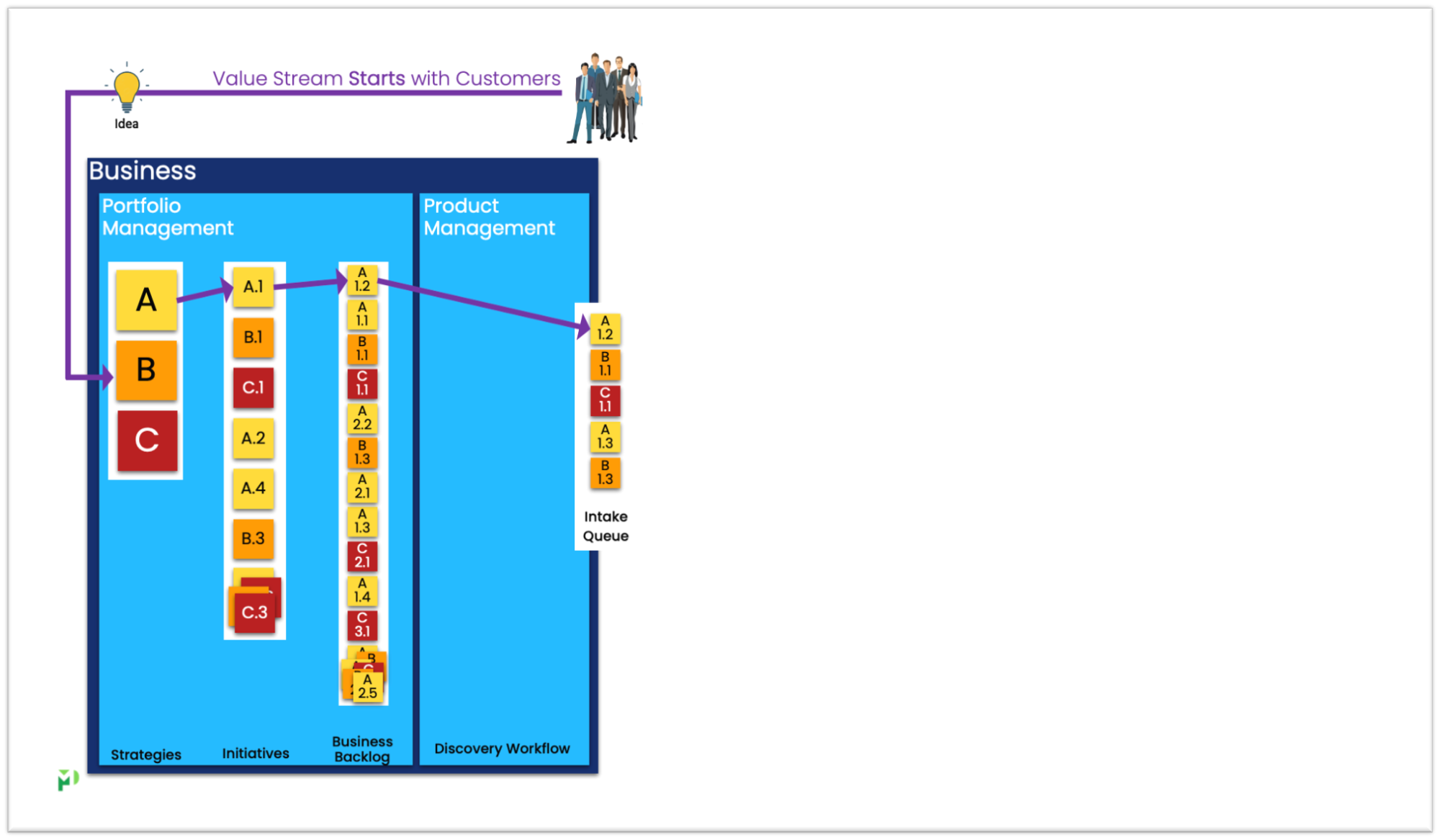
Figure 6: IVS Business Side Discovery Workflow
The intake queue is a bridge between the business side and the implementation side of the IVS. Items in this queue are ready for implementation and will be pulled when everyone that will complete value-adding activities has the capacity (and funding) for the MBI or MVP.
From this point forward, I am going to focus on MBs in the continuing flow of value delivered – please keep in mind that at any point in time for a given value stream, it could be either MBIs or MVPs.
MBIs contain information regarding which value streams (Operational, Development, or Supporting) will have teams of people who will contribute to the value being implemented. As shown in figure 7, an MBI is pulled from the queue into the intake backlog when the estimated capacity of those doing the work at the point in time when they will do it is available.
An MBI is not pulled if the delivery team(s) in the Development value stream are ready, but those in the Supporting value stream are not.
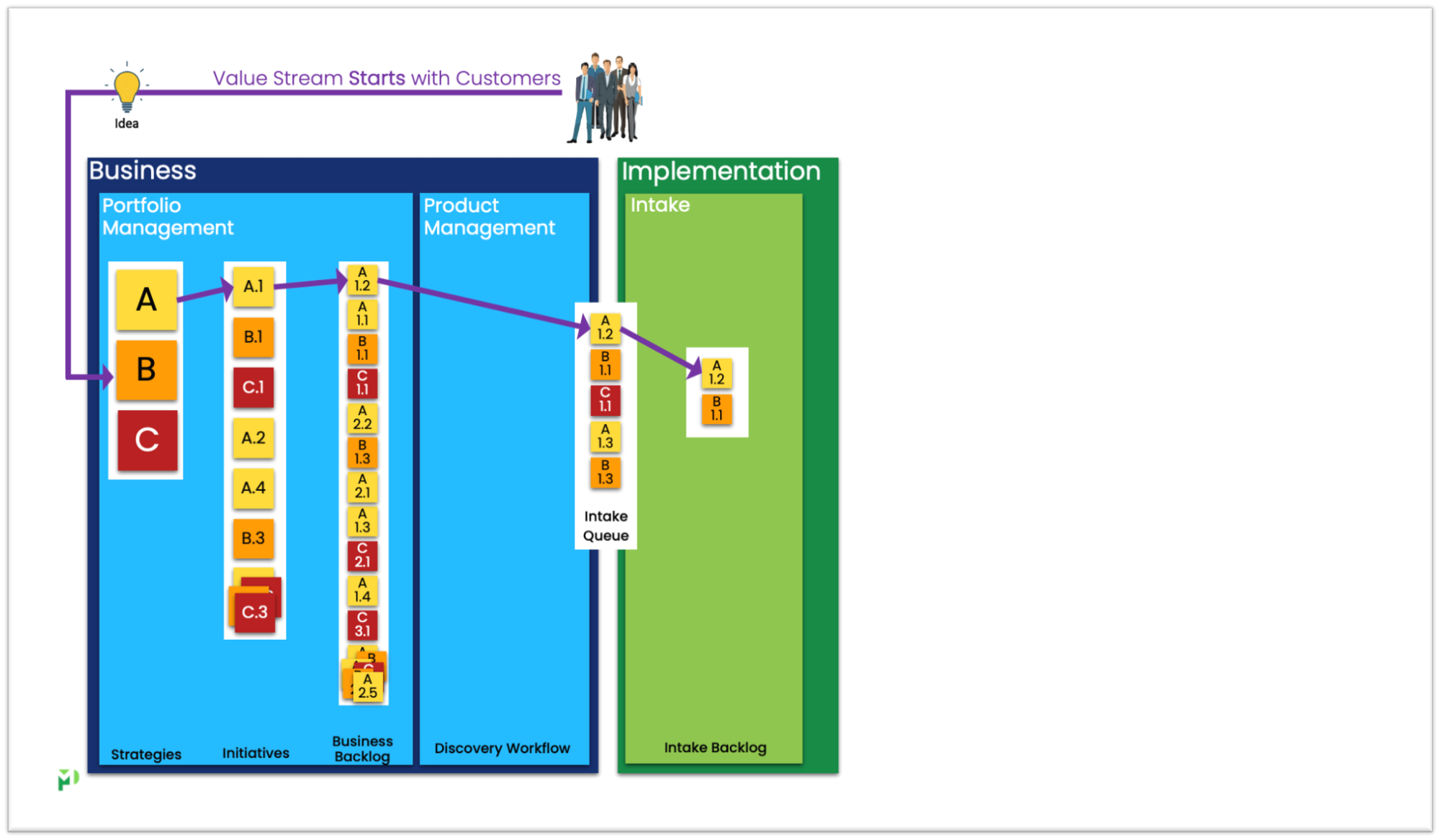
Figure 7: IVS Implementation Side – Intake Backlog
In this example, the MBI is one with complexity – there are value-adding activities required from the Operational, Development, and Supporting value streams. Figure 8 shows the entire Idealized Value Stream (IVS), and figure 9 is the complex MBI. In this example, there are:
- Multiple products that will be enhanced by multiple teams (Development Value Stream)
- Significant changes in the Operational Value Stream that need to be done in parallel
- A high-level effort marketing campaign that needs to be worked on in parallel (Supporting Value Stream)
This MBI is pulled when all of this work is coordinated and the people doing the work have the capacity, not before, and not pushed on them.
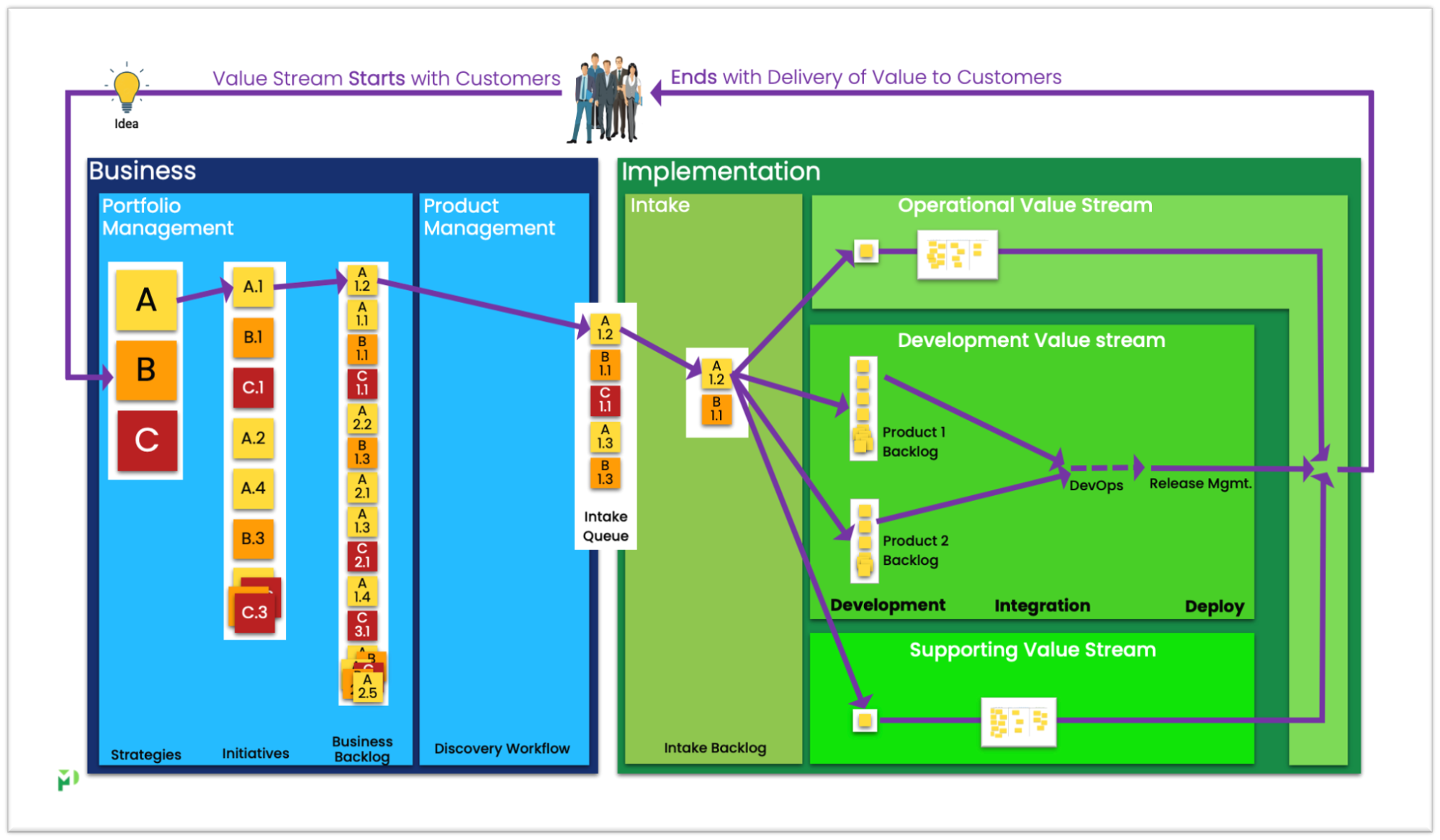
Figure 8: The Entire IVS
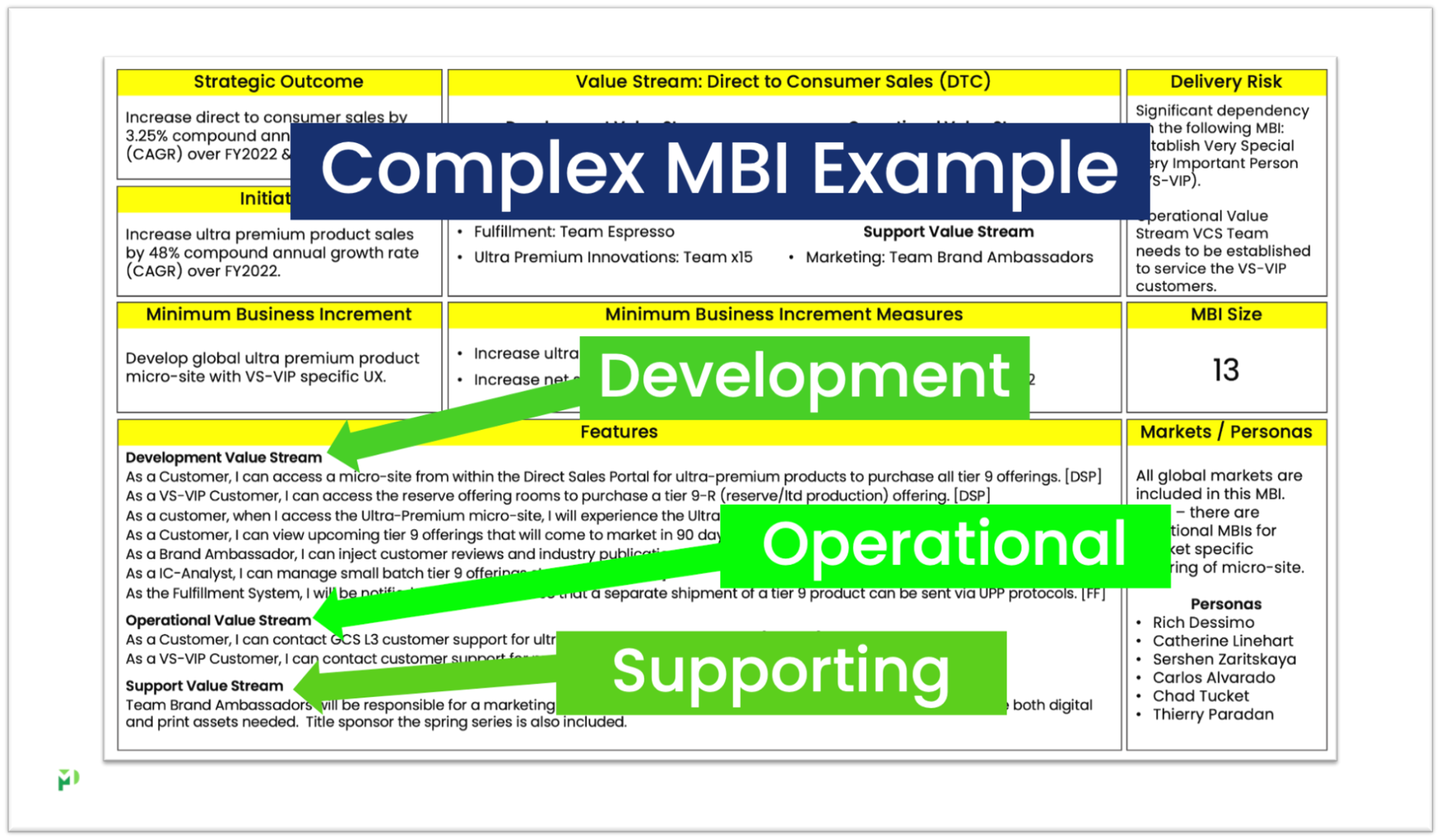
Figure 9: Complex MBI Example
Figure 10 represents a less complex MBI. In this example, a single team enhances a single product with minimal changes in the operational value stream.
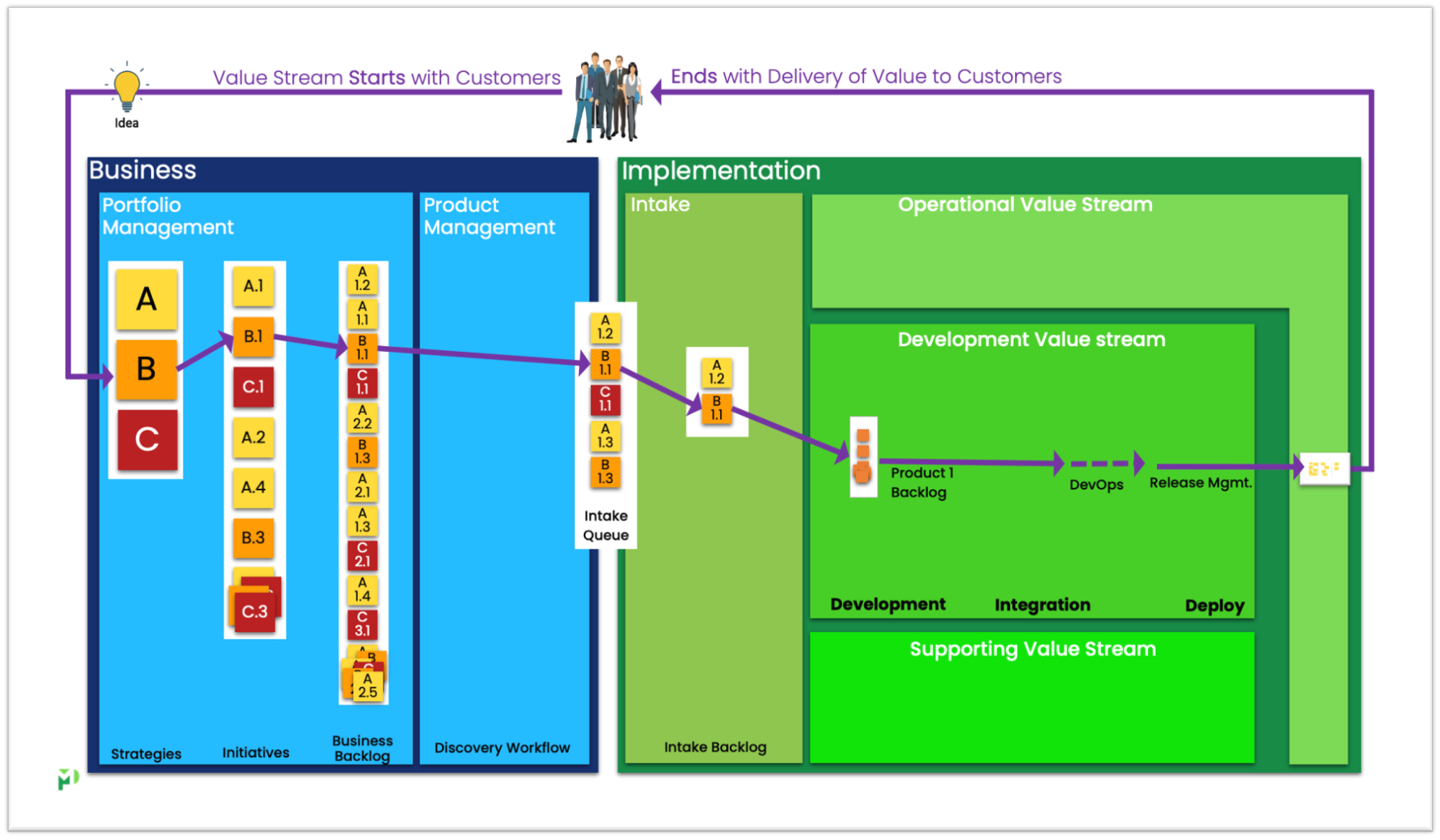
Figure 10: Less Complex MBI Example
This view of the Idealized Value Stream (IVS) shows how the value delivery flows from an idea through Portfolio Management, Product Management, Intake Queue, Intake Backlog, and the three value streams. I have found that this expanded visualization paints a more clear mental picture of how the value flows as it covers Operational, Development, AND Supporting value streams.
For additional information, I did a LinkedIn Live stream on this topic: The Idealized Value Stream.

We help implement lean and agile methodologies to streamline processes in a context-sensitive manner.
Quick Links
Latest Posts
All Things Value Delivery Management – Value Flow Factor 1: Small Items
Is the size of work the minimum scope to provide value a customer can consume? In most cases, the answer is no. However, whether it is a project, business case, charter, work package, epic, etc., we can almost always identify a minimum business increment. Relentless...
Project Manager to Value Delivery Manager
Here we have a common problem. The “agile team” comprises a product owner, team coach, and team members. Far too often, I hear something like, “there are no project managers in agile.” Agile teams are empowered to make decisions and determine how to get the work done....
